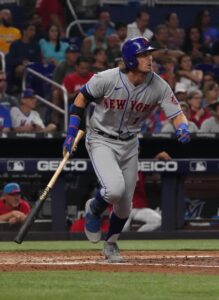Dec. 25: The Athletics aren’t taking the holiday off. They’re in agreement with outfielder Tyler Soderstrom on a seven-year, $86MM extension, reports Jeff Passan of ESPN. Passan adds that there’s a club option for 2033 and escalators that could push the contract value by another $45MM if the option is exercised. The deal buys out at least three free agent years and potentially a fourth, keeping him under club control through his age-31 season. Soderstrom is represented by Paragon Sports International.
Soderstrom becomes the latest core offensive piece whom the A’s lock up on a long-term deal. They extended Brent Rooker and Lawrence Butler on respective $60MM and $65.5MM guarantees last winter. Soderstrom tops those by a decent margin, becoming the largest contract in club history in the process. Their three-year, $67MM free agent deal with Luis Severino had previously been that high-water mark.
[Related: Largest Contract in Franchise History for Each MLB Team]
The lefty-hitting Soderstrom was a first-round pick in 2020. He’d been an excellent offensive player dating back to high school. The biggest question was where he’d fit on the other side of the ball. While Soderstrom was drafted as a catcher, most scouts felt he’d need to move off the position. That has essentially been borne out, as his only 15 MLB starts behind the dish came during his 2023 rookie season. The fallback for poor defensive catchers is generally first base, and that’s indeed where Soderstrom spent the early part of his big league tenure.
Soderstrom struggled over a 45-game sample as a rookie. His .233/.315/.429 slash across 213 plate appearances in 2024 was a significant step forward but hadn’t yet put him alongside Rooker, Butler and Shea Langeliers as clear members of the A’s core. Soderstrom entered this year with a little pressure in the form of 2024 fourth overall pick Nick Kurtz, a college first baseman who was expected to hit his way to the majors very quickly.

While Kurtz would do just that, Soderstrom’s breakout ’25 campaign ensured the A’s couldn’t afford to take him out of the lineup either. The 24-year-old was one of the league’s best hitters in the first few weeks of the season. He connected on nine home runs with a .284/.349/.560 slash before the end of April. Soderstrom was tied for fourth in MLB (behind only Aaron Judge, Cal Raleigh and Eugenio Suárez) in homers through the season’s first month. By the time Kurtz forced his way to the majors on April 21, Soderstrom was locked into the middle of Mark Kotsay’s batting order.
That presented the A’s with a positional dilemma. Rooker is an everyday designated hitter. The 6’5″, 240-pound Kurtz wasn’t going to be able to play anywhere other than first base. Despite his catching/first base background, Soderstrom is a solid athlete and average runner. The A’s threw him into left field on the fly even though he’d had no professional experience there. They presumably expected to live with some defensive growing pains to keep his bat in the lineup.
Soderstrom dramatically exceeded those expectations. He graded 10 runs better than an average left fielder by measure of Defensive Runs Saved. Statcast graded his range five plays above average. Soderstrom ended the season as a Gold Glove finalist at a position he’d never played five months earlier. He joins Butler as core outfield pieces, ideally in a corner tandem flanking defensive specialist Denzel Clarke in center.
The increased defensive responsibility didn’t impact Soderstrom’s rhythm at the plate. He scuffled between May and June but rebounded with a .305/.359/.530 showing over the season’s final four months. Soderstrom finished with an overall .276/.346/.474 batting line while ranking fourth on the team with 25 homers. He improved his contact rate by six percentage points and held his own against same-handed pitching (.270/.315/.423) while teeing off on righties (.278/.356/.491). The breakout also wasn’t a product of the A’s playing half their games at the hitter-friendly Sutter Heath Park. Soderstrom had an OPS north of .800 both at home and on the road.
As recently as this past summer, there was speculation about the A’s potentially swapping Soderstrom for a controllable starting pitcher. The extension firmly takes that off the table and ensures he’ll remain alongside Kurtz, Rooker, Butler and Jacob Wilson in an excellent offensive corps. The first three are signed through at least 2029. Kurtz and Wilson are under team control for five seasons. Langeliers has another two seasons of arbitration eligibility.
Soderstrom was already under club control for four seasons. He was a year closer to free agency than Butler was at the time of his extension, which explains why the price was a little more than $20MM higher. Soderstrom tops the $57.5MM guarantee which Royals third baseman Maikel Garcia received in the same service class, but that deal only extended K.C.’s control window by two seasons.
The A’s backloaded the Rooker and Butler extensions, with the highest salaries corresponding to their planned move to Las Vegas in 2028. The salary breakdown on Soderstrom’s deal hasn’t yet been reported. The A’s had a projected payroll around $87MM before today, as calculated by RosterResource. That’s $12MM above where they opened the ’25 season. General manager David Forst told MLB.com’s Martín Gallegos last week that the team was looking to upgrade a rotation that ranked 27th in ERA and 25th in strikeout percentage.
Image courtesy of Charles LeClaire, Imagn Images.
]]> Once again, the Mets are moving on from a long-tenured player as they overhaul their roster this offseason. They traded
Once again, the Mets are moving on from a long-tenured player as they overhaul their roster this offseason. They traded 